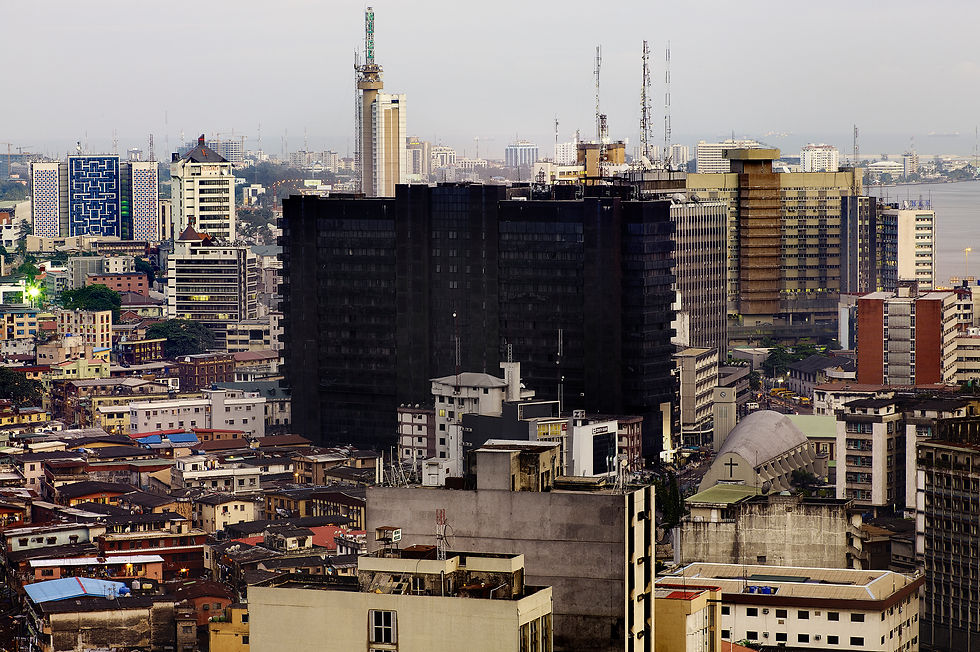LagosPhoto 2012: Seven Days in the Life of Lagos (Co-Curator)
Lagos, Nigeria (multiple locations)
October 13 - November 11, 2012
In 2012, LagosPhoto presented the third edition of its international photography festival entitled Seven Days in the Life of Lagos, featuring twenty-nine local and international photographers.
The theme aimed to capture the energy and vibrance that make the city of Lagos such a unique cultural environment. Lagos is the creative and business hub of Nigeria, arguably even Africa, an urban megapolis with a high population density. The rate of change in the city is also rapidly evolving with improvements struggling to keep pace with the restlessness and innovation of the people. Lagos is the most populous city in Nigeria, the second fastest growing city in Africa and the seventh fastest growing city in the world. A city of extremes and contradictions, Lagos transforms with the fast pace of urban migration and the explosion of development and technology that is dissolving barriers and leading to new types of interactions.
LagosPhoto 2012 aimed to document the city of Lagos from a comprehensive and nuanced perspective, one that reveals the big picture by focusing on the minute details of social life. Photographers were nominated to document aspects of life in the city with an extended photographic project, with topics including religion, architecture, culture, nightlife, economy, music, lifestyle, sports, government, and infrastructure, among others.
LagosPhoto 2012 opened with the official exhibition at the Eko Hotel & Suites, while the festival extended throughout Lagos with 9 indoor and outdoor exhibitions and art spaces and public areas around the city, including the African Artists’ Foundation, Nimbus Gallery, A White Space, Omenka Gallery, The Federal Printing Press, The Kalakuta Fela Museum, Muri Okunola Park, the University of Lagos, and the Falomo Roundabout.
An exhibition of photographs that document the ongoing demolition of Makoko inaugurated the newly created LagosPhoto Projects series at the African Artists’ Foundation Gallery, where a group of photographers and journalists intervene in public spaces to reveal stories of the changing social landscape in Nigeria. Anton Cobijn’s photographs of Fela Kuti in the early 1980s were exhibited at the Kalakuta Fela Museum in a partnership between Felabration and LagosPhoto. An installation of the Nigeria Nostalgia Project, an online digital archive of collected photographs, including vernacular images, video, sound bytes, press clippings, publicity stills, and various ephemera depicting scenes in people in Nigeria between 1960-1980, unfolded in an interactive presentation at A White Space. Goethe-Institut Nigeria partnered with LagosPhoto to present an installation entitled Black.Light at the Federal Printing Press in Lagos Island. Black.Light is based on the work of renowned war photographer Wolf Böwig’s report on West African Civil Wars, and includes fifteen graphic artists from around the world in a combination of photographs, literary texts, and graphic novels. Outdoor venues such as the Muri Okunola Park, the University of Lagos, and the Falomo Roundabout engaged public spaces throughout the city with exhibitions of large scale, durable outdoor photographic prints.
Participating Artists:
Halima Abubakar (Nigeria), Bunmi Adedipe (Nigeria), Segun Adelfila (Nigeria), Aderemi Adegbite (Nigeria), Jenevieve Aken (Nigeria), Akintunde Akinleye (Nigeria), Kelechi Amadi-Obi (Nigeria), Lolade Cameron Cole (Nigeria), Medina Dugger (USA), Delphine Fawundu (Sierra Leone), Maja Flink (Sweden), Stanley Greene (USA), Jane Hahn (USA), Chantal Heijnen (The Netherlands), Chinenye Godsproperty John (Nigeria), David de Jong (The Netherlands), Benedicte Kurzen (France), Ruth McDowall (New Zealand), Jide Odukoya (Nigeria), Lakin Ogunbanwo (Nigeria), Olayinka Oluwakuse (Nigeria), Bayo Omoboriowo (Nigeria), George Osodi (Nigeria), Judith Quax (Sweden), Olayinka Sangotoye (Nigeria), Alafuro Sikoki (Nigeria), Andrea Stultiens (The Netherlands), Margherita Trestini (Italy), and Hans Wilschut (The Netherlands).

"Makoko not Maroko" series, 2012.

"Generations" series, 2012.

"Sealed Property", 2012.

"Makoko not Maroko" series, 2012.
Selected Works
(Click To Enlarge)